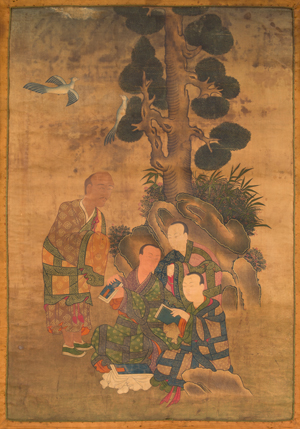
A meditation session led by Tracy Cochran.
For centuries Himalayan practitioners have used meditation to quiet the mind, open the heart, calm the nervous system, and increase focus. Mindfulness meditation offers both a refuge from the world around us, and an opportunity to engage with it more consciously.
Whether you’re a beginner, a dabbler, or a skilled meditator seeking the company of others, join expert teachers in a forty-five-minute weekly program. Each session is inspired by a different work of art from the Rubin Museum’s collection. Designed to fit into your lunch break, the program includes an opening talk, a twenty-minute sitting session, and a closing discussion. Chairs will be provided.
Presented in partnership with Sharon Salzberg and the New York Insight Meditation Center. This program is supported in part by the Hemera Foundation.

RELATED ARTWORK

Theme: Community
Above is an 19th century thankga painting of Four Arhats. The word arhat means “worthy one” in Sanskrit and serves as a title for those who have achieved awakening and will pass into nirvana upon their death. According to tradition, the Buddha selected 16 arhats to remain in the world to protect his teachings until Maitreya, the Buddha of the future, can return to continue what the Buddha started. Along with being a focus of veneration particularly in East Asia, the 16 arhats also serve as ideals for moral behavior within the community. While most pieces in the Rubin’s collection can be linked to a single artist, this piece was either done by the 14th Karmapa Tekchok Dorje (1797-1845) or created under his supervision in his workshop.
About the Speaker

Tracy Cochran is editorial director of Parabola, a quarterly magazine that for forty years has drawn on the world’s cultural and wisdom traditions to explore the questions that all humans share. She has been a student of meditation and spiritual practices for decades and teaches mindfulness meditation and mindful writing at New York Insight Meditation Center and throughout the greater New York area. In addition to Parabola, her writing has appeared in The New York Times, Psychology Today, O Magazine, New York Magazine, the Boston Review, and many other publications and anthologies. For more information please visit tracycochran.org.
